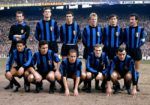Defensive solidity is the all important component that every team must base the foundations upon, particularly those who may find themselves fighting for their lives at the bottom of the Premier League table. Coming up against the likes of Manchester United, Chelsea and Manchester City may be an exciting, yet equally daunting, proposition for teams such as Burnley who cannot match the resources or quality of players on the pitch. It may, therefore, require a strategy that not only focuses on keeping it tight at the back, but also offers something going forward for the opposition to think about. Sean Dyche may already know that numerous teams are likely to dominate possession, but simply lying down and surrendering has costs many teams dear in the past. Playing a rigid back five can allow a defence to remain tight and restrict the space in and around the 18 yard box, with two holding midfielders in front to break down attacks and be the focal point for attacks. The three further up-field line up as two wingers on either flank to provide support for the lone striker, whose task is to hold the ball up and bring others into play; although these three might find themselves slightly isolated at times, it allows a team to have an attacking presence and make the opposition wary of getting complacent and pushing too many forward in case they get caught by a counter attack which decides the game.









Recent Comments